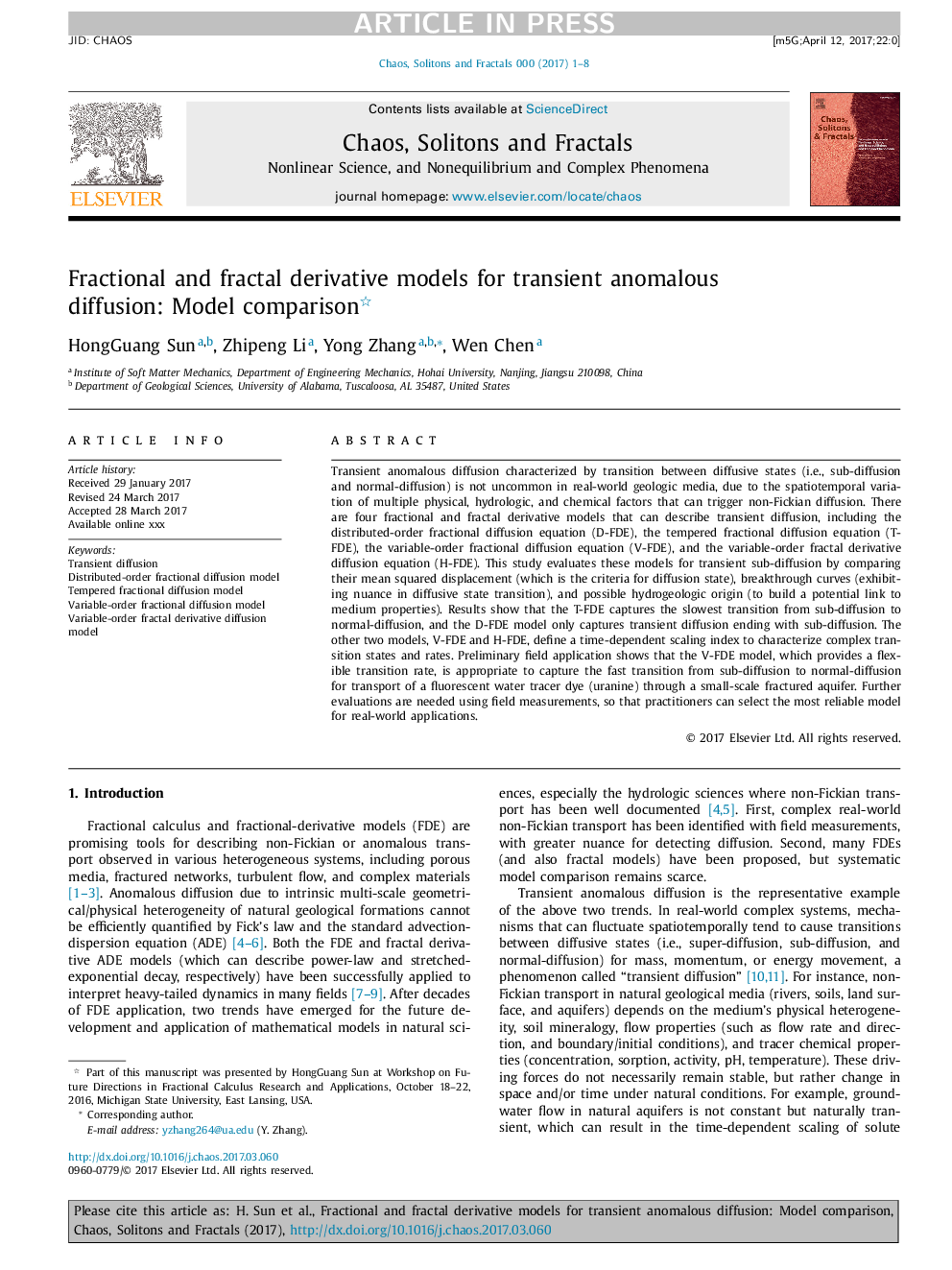| Article ID | Journal | Published Year | Pages | File Type |
|---|---|---|---|---|
| 5499725 | Chaos, Solitons & Fractals | 2017 | 8 Pages |
Abstract
Transient anomalous diffusion characterized by transition between diffusive states (i.e., sub-diffusion and normal-diffusion) is not uncommon in real-world geologic media, due to the spatiotemporal variation of multiple physical, hydrologic, and chemical factors that can trigger non-Fickian diffusion. There are four fractional and fractal derivative models that can describe transient diffusion, including the distributed-order fractional diffusion equation (D-FDE), the tempered fractional diffusion equation (T-FDE), the variable-order fractional diffusion equation (V-FDE), and the variable-order fractal derivative diffusion equation (H-FDE). This study evaluates these models for transient sub-diffusion by comparing their mean squared displacement (which is the criteria for diffusion state), breakthrough curves (exhibiting nuance in diffusive state transition), and possible hydrogeologic origin (to build a potential link to medium properties). Results show that the T-FDE captures the slowest transition from sub-diffusion to normal-diffusion, and the D-FDE model only captures transient diffusion ending with sub-diffusion. The other two models, V-FDE and H-FDE, define a time-dependent scaling index to characterize complex transition states and rates. Preliminary field application shows that the V-FDE model, which provides a flexible transition rate, is appropriate to capture the fast transition from sub-diffusion to normal-diffusion for transport of a fluorescent water tracer dye (uranine) through a small-scale fractured aquifer. Further evaluations are needed using field measurements, so that practitioners can select the most reliable model for real-world applications.
Keywords
Related Topics
Physical Sciences and Engineering
Physics and Astronomy
Statistical and Nonlinear Physics
Authors
HongGuang Sun, Zhipeng Li, Yong Zhang, Wen Chen,
